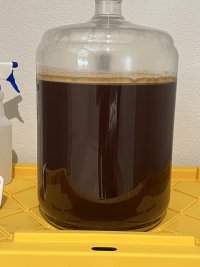fermentingnewb
Member
Good afternoon,
I am new to brewing and had began my first batch, American Pale Ale kit by Brewers Best. I made my wort, checked for gravity which was in range and pitched the yeast. 6 days later, I transferred the brew using a siphon to a carboy even though the Krausen has not settled (without checking final gravity and before the settling) since the instructions said to transfer to a secondary when the fermentation slows but before it completes. I now have this type of mixture (day 8), foam on top and appears to be sizzling and activity in the airlock. Should I wait it out 2 weeks or should I dump it now and restart? All suggestions appreciated and cant wait to learn from you seasoned brewers! Thanks
I am new to brewing and had began my first batch, American Pale Ale kit by Brewers Best. I made my wort, checked for gravity which was in range and pitched the yeast. 6 days later, I transferred the brew using a siphon to a carboy even though the Krausen has not settled (without checking final gravity and before the settling) since the instructions said to transfer to a secondary when the fermentation slows but before it completes. I now have this type of mixture (day 8), foam on top and appears to be sizzling and activity in the airlock. Should I wait it out 2 weeks or should I dump it now and restart? All suggestions appreciated and cant wait to learn from you seasoned brewers! Thanks



